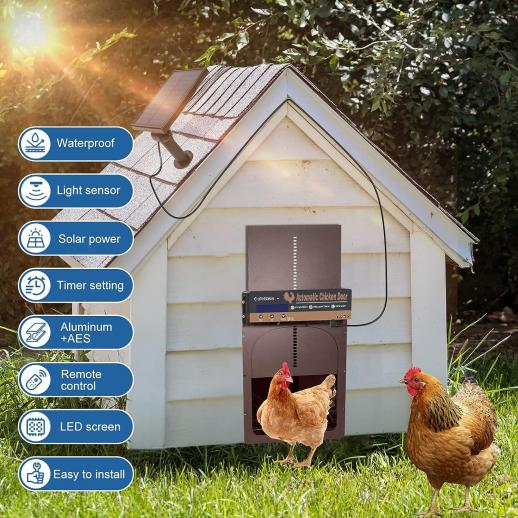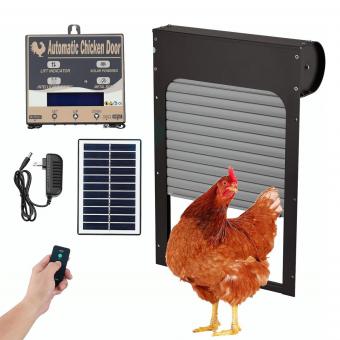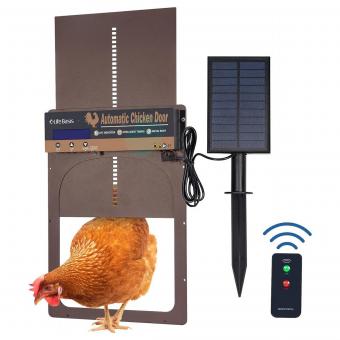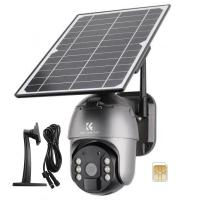How To Make A Manual Chicken Coop Door?
Building a manual chicken coop door is a task that many backyard poultry enthusiasts find both practical and rewarding. A manually operated door provides reliable access for your chickens while giving you control over their security and well-being. This article will guide you through the steps to construct a durable and functional manual chicken coop door, from selecting materials to final installation, ensuring you have all the knowledge to do it yourself.

1. Planning and Design
Before starting your project, it's crucial to plan and design your chicken coop door. Consider the following aspects:
- Size of the Door: The door needs to be large enough for your chickens to enter and exit easily but not so large that it compromises the security of the coop. Typically, a door size of about 12 inches wide by 15 inches high is adequate for most chicken breeds.
- Materials: Use weather-resistant materials to ensure the door remains functional in all seasons. Common materials include plywood, treated wood, and metal.
- Location: Decide where to place the door on the coop. It should be easily accessible for cleaning and maintenance purposes.
2. Gathering Materials and Tools
You will need the following materials and tools:
- Plywood or treated wood for the door
- Wooden planks for framing
- Hinges
- A latch or locking mechanism
- Screws and nails
- Saw (hand saw or circular saw)
- Drill
- Measuring tape
- Sandpaper
- Paint or wood sealant for weatherproofing
3. Constructing the Door
With your materials ready, follow these steps to construct the door:
- Measure and Cut: Measure the opening where the door will be installed. Cut a piece of plywood to fit this opening. If you’re using treated wood, ensure you cut it to the appropriate dimensions.
- Frame the Door: Construct a frame using wooden planks to add stability to the door. This can be done by attaching wood planks along the edges of the plywood.
- Sand the Edges: Use sandpaper to smooth any rough edges on the door and frame to prevent injury to the chickens or yourself.
- Weatherproof the Door: Apply a coat of paint or wood sealant to protect the wood from moisture and the elements.
4. Installing Hinges and Latch
Once the door is constructed, it's time to attach the hinges and latch:
- Attach Hinges: Position the hinges on one side of the door and mark where the screws will go. Pre-drill holes to prevent the wood from splitting, then attach the hinges using screws.
- Install the Latch: On the opposite side of the hinges, attach the latch or locking mechanism. This will ensure the door stays securely closed when needed.
5. Installing the Door on the Coop
Now that the door and hardware are assembled, install the door on the coop:
- Mark the Position: Position the door in the opening of the coop. Use a level to ensure the door is straight, and mark where the hinges will be attached to the coop.
- Pre-drill Holes: Pre-drill holes for the hinge screws on the coop frame.
- Attach the Door: Secure the door to the coop by screwing the hinges into the pre-drilled holes. Check that the door opens and closes smoothly.
- Test the Latch: Ensure the latch or locking mechanism functions correctly and keeps the door securely closed.
6. Additional Considerations
- Insulation: Depending on your climate, you may need to insulate the door to keep the coop warm during cold seasons.
- Predator Protection: Consider adding additional security features, such as a secondary latch, to protect against predators.
- Ease of Use: Ensure the door can be easily operated even during bad weather conditions, such as rain or snow.
7. Maintenance Tips
Regular maintenance will keep your chicken coop door in good working condition:
- Inspect Regularly: Check the door, hinges, and latch for any signs of wear and tear. Replace any damaged parts as needed.
- Clean Often: Keep the door clean to prevent any build-up of dirt or debris that could impede its functionality.
- Reapply Weatherproofing: Periodically reapply paint or wood sealant to maintain the door’s protection against the elements.
8. Troubleshooting Common Issues
- Sticking Door: If the door sticks or is difficult to open, check for any obstructions and ensure the hinges are properly aligned. Lubricating the hinges can also help.
- Loose Hinges: Over time, screws may loosen. Tighten any loose screws or replace them with larger ones if necessary.
- Latch Problems: If the latch is not engaging properly, adjust its position or replace it with a more robust mechanism.
By following these steps, you can successfully build and install a manual chicken coop door that will serve your flock well for years to come. Not only does a manual door provide a cost-effective solution, but it also gives you the satisfaction of creating a functional addition to your coop with your own hands. With proper planning, quality materials, and regular maintenance, your homemade chicken coop door will ensure your chickens' safety and ease of access, contributing to a happy and healthy flock.








































